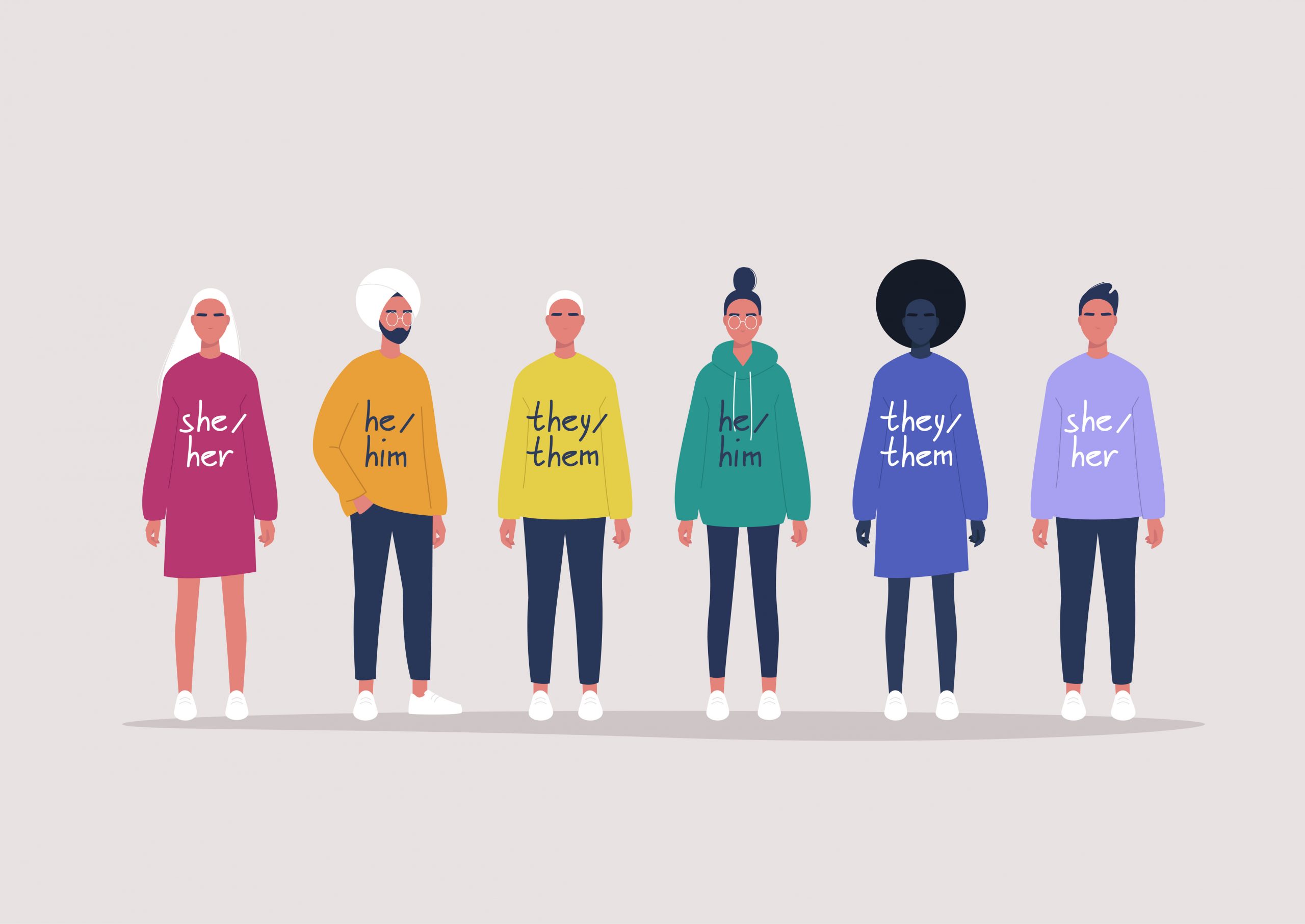A biased language
All Men people are created equal
Beyond binary

George Labs are a safe space for everyone.
Different language, different problems
What are your pronouns?
When it comes to pronouns, the English language adapts to gender-neutrality quite easily. English provides the pronouns “they” and “them”. These lend themselves to a gender-inclusive language. Usually a plural form, “they” can also refer to someone in a neutral way, without assuming someone’s gender (and getting it wrong). “Who is Kim? I haven’t met them yet.” No either or, no awkwardness. Also, by using “they/them” when talking about a stranger, we foster the idea of gender being a personal choice, not something we are born with or that we assign to someone. We normalise that gender can not necessarily be inferred from someone’s outer appearance. Hence, we open up space for non-binary people. In many other languages, there is no pronoun that can be used in a gender neutral way. Here, so called “neopronouns” come into play. They are invented to provide gender neutrality and non-binary. They are usually not (yet) anchored in the respective language. Sweden, however, introduced the gender neutral pronoun “hen” as an alternative to “hon” (she) and “han” (he) already in 2015.
We are George. And we are a safe space.
“We are deeply convinced that diversity in all dimensions – also, and especially, in the area of gender diversity – makes us more capable, more innovative and better. To ensure that we’re not simply paying lip service to these aims, we have set ourselves concrete goals and are very consistent in pursuing them.”
Gerda Holzinger-Burgstaller, CEO of Erste Bank Oesterreich, banking subsidiary of Erste Group in Austria
The Bloomberg Gender Equality Index 2022 listed the Erste Group the fourth year in a row. This honorary listing testifies to the company’s gender equality efforts.
As part of our continuing commitment to #GenderEquality, we are proud to announce our inclusion in the 2022 @Bloomberg Gender-Equality Index. We are once again the only Austrian company in this prestigious index #BloombergGEI #DataForGood
▷ https://t.co/yUExQDoipI— Erste Group (@ErsteGroup) January 27, 2022
What’s the takeaway?
-
- Avoid “male as default” aka male-biased language. Replace “man” by “person”. Say e.g. “salesperson” instead of “salesman” or choose a gender-neutral alternative. This could be e.g. “flight attendant” instead of “stewardess”/ “steward”.
- Some more examples come from the working place. “Guys” is a very common way to address a group of people, however, in its original meaning it is male and thus not gender-inclusive. The alternatives are manifold. “Hey all”, “ok everyone”, “dear team” … take it as an incentive to add variety to your language.
- Pronouns do matter. Adopt “they/them” for a gender-neutral way of talking about others if the gender is unclear or unknown. Or ask. Most queer people honour the question “What are your pronouns?”. It shows the effort to make it right.
- Provide your pronouns in profiles, e.g. in Slack next to your name. This, of course, makes it easy for others to use your right pronouns. Furthermore, you help normalising this practice and thereby foster the idea that pronouns can or should not be assumed from one’s outer appearance.


